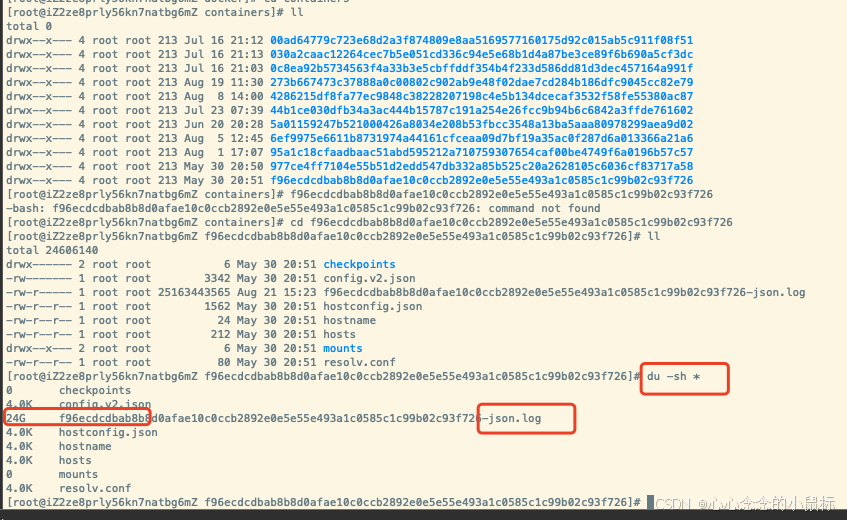目录
一、mysql安装
二、MySQL主从复制
一、mysql安装
yum install cmake gcc-c++ openssl-devel ncurses-devel.x86_64 rpcgen.x86_64 #安装依赖性
#在root路径下下载mysql-boost-5.7.44、libtirpc-devel-1.3.3-8.el9_4.x86_64.rpm安装包
yum install libtirpc-devel-1.3.3-8.el9_4.x86_64.rpm -y
tar zxf mysql-boost-5.7.44.tar.gz #解压源码包
cd /root/mysql-5.7.44
#当cmake出错后如果想重新检测,删除 mysql-5.7.44 中 CMakeCache.txt即可
rm -fr CMakeCache.txt #删除它可加快make
#源码编译安装MySQL
cmake \
-DCMAKE_INSTALL_PREFIX=/usr/local/mysql \ #指定安装路径
-DMYSQL_DATADIR=/data/mysql \ #指定数据目录
-DMYSQL_UNIX_ADDR=/data/mysql/mysql.sock \ #指定套接字文件
-DWITH_INNOBASE_STORAGE_ENGINE=1 \ #指定启用INNODB存储引擎,默认用myisam
-DWITH_EXTRA_CHARSETS=all \ #扩展字符集
-DDEFAULT_CHARSET=utf8mb4 \ #指定默认字符集
-DDEFAULT_COLLATION=utf8mb4_unicode_ci \ #指定默认校验字符集
-DWITH_BOOST=/root/mysql-5.7.44/boost/boost_1_59_0/ #指定c++库依赖make -j2 #-j2 表示有几个核心就跑几个进程
make install
cd
cd /usr/local/mysql/support-files/
cp mysql.server /etc/init.d/mysqld
cd
vim ~/.bash_profile
# .bash_profile
# Get the aliases and functions
if [ -f ~/.bashrc ]; then
. ~/.bashrc
fi
# User specific environment and startup programs
PATH=$PATH:$HOME/bin:/usr/local/mysql/bin
export PATHsource ~/.bash_profile vim /etc/my.cnf
[mysqld]
datadir=/data/mysql
socket=/data/mysql/mysql.sock
symbolic-links=0cd /usr/local/mysql/
useradd -s /sbin/nologin -M mysql
mkdir /data/mysql -p
chown mysql.mysql -R /data/mysql/
cd
cd /usr/local/mysql/support-files/
cp mysql.server /etc/init.d/mysqld
cd mysqld --user mysql --initialize
#mysql初始密码:

/etc/init.d/mysqld start
chkconfig mysqld on
mysql_secure_installation
Securing the MySQL server deployment.
Enter password for user root: #输入当前密码
The existing password for the user account root has expired. Please set a new
password.
New password: #输入新密码
Re-enter new password: #重复密码
VALIDATE PASSWORD PLUGIN can be used to test passwords
and improve security. It checks the strength of password
and allows the users to set only those passwords which are
secure enough. Would you like to setup VALIDATE PASSWORD plugin?
Press y|Y for Yes, any other key for No: no #是否启用密码插件
Using existing password for root.
Change the password for root ? ((Press y|Y for Yes, any other key for No) : no
#是否要重置密码
... skipping.
By default, a MySQL installation has an anonymous user,
allowing anyone to log into MySQL without having to have
a user account created for them. This is intended only for
testing, and to make the installation go a bit smoother.
You should remove them before moving into a production
environment.
Remove anonymous users? (Press y|Y for Yes, any other key for No) : y
Success.
Normally, root should only be allowed to connect from
'localhost'. This ensures that someone cannot guess at
the root password from the network.
Disallow root login remotely? (Press y|Y for Yes, any other key for No) : y
Success.
By default, MySQL comes with a database named 'test' that
anyone can access. This is also intended only for testing,
and should be removed before moving into a production
environment.
Remove test database and access to it? (Press y|Y for Yes, any other key for No)
: y
- Dropping test database...
Success.
- Removing privileges on test database...
Success.
Reloading the privilege tables will ensure that all changes
made so far will take effect immediately.
Reload privilege tables now? (Press y|Y for Yes, any other key for No) : y
Success.mysql -uroot -pmysql
测试:

二、MySQL主从复制
#172.25.254.110 master
vim /etc/my.cnf
[mysqld]
datadir=/data/mysql
socket=/data/mysql/mysql.sock
symbolic-links=0
log-bin=mysql-bin
server-id=1/etc/init.d/mysqld restart
mysql -pmysql
CREATE USER 'repl'@'%' IDENTIFIED BY 'miky';
GRANT REPLICATION SLAVE ON *.* TO repl@'%';
SHOW MASTER STATUS;cd /data/mysql/
mysqlbinlog mysql-bin.000001 -vv #查看二进制日志
#172.25.254.120 slave
vim /etc/my.cnf
[mysqld]
datadir=/data/mysql
socket=/data/mysql/mysql.sock
symbolic-links=0
server-id=2/etc/init.d/mysqld restart
mysql -pmysql
CHANGE MASTER TO
MASTER_HOST='172.25.254.110',MASTER_USER='repl',MASTER_PASSWORD='miky',MASTER_LOG_FILE='mysqlbin.000001',MASTER_LOG_POS=350;
#mysqlbin.000001、350通过在master主机里`SHOW MASTER STATUS查看
start slave;
SHOW SLAVE STATUS\G;注意检查这两个为yes:
Slave_IO_Running: Yes
Slave_SQL_Running: Yes
我碰到的问题:
当重新开启slave后Slave_SQL_Running值会变为NO,可以用以下方法解决:
Slave_SQL_Running: No
1.程序可能在slave上进行了写操作
2.也可能是slave机器重起后,事务回滚造成的.
一般是事务回滚造成的:
解决办法:
mysql> stop slave ;
mysql> set GLOBAL SQL_SLAVE_SKIP_COUNTER=1;
mysql> start slave ;

在master上删除已创建的库,slave上同步更新库,证明两个机子已经成功同步状态
测试:
#在master上创表
mysql -pmysql
CREATE DATABASE miky;
CREATE TABLE miky.userlist (
-> username varchar(20) not null,
-> password varchar(50) not null
-> );
INSERT INTO miky.userlist VALUE ('miky','123');
SELECT * FROM miky.userlist;#在slave上查看数据是否同步过来
SELECT * FROM miky.userlist;




















